Rabbits and voles are the main culprits for chewing up your tulips. Gophers can also be a major threat, but they’re more likely to munch on your bulbs. Squirrels and deer like to eat tulips as well, but sometimes they’ll just bite off the tops of the flowers instead of eating them entirely. Raccoons, groundhogs, chipmunks, woodchucks, and slugs and snails are all potential culprits there’s no way to tell which one is responsible for eating your flowers unless you catch them in the act!
Tulips are a popular choice for gardeners because they can withstand a variety of climates and conditions, and their colorful petals make them an eye-catching addition to any garden.
If you’ve got a tulip garden and are seeing signs of damage in the form of nibbled petals or even holes in the soil where bulbs were once planted, it’s likely that something is eating your tulips.
In this post, we’ll be discussing some of the common pests that munch on tulips, so you can know what to look out for when you’re out in your garden this spring.
Rabbits
As we all know, rabbits are a very common pest in gardens and yards all over the world. They are very good at eating a variety of different plants, including tulips.
The best way to protect your tulips from being eaten by rabbits is by using a physical barrier around your garden bed. This can be done by adding fencing around the perimeter of your flower bed or planting some tall plants around it so they cannot reach them without jumping over them first.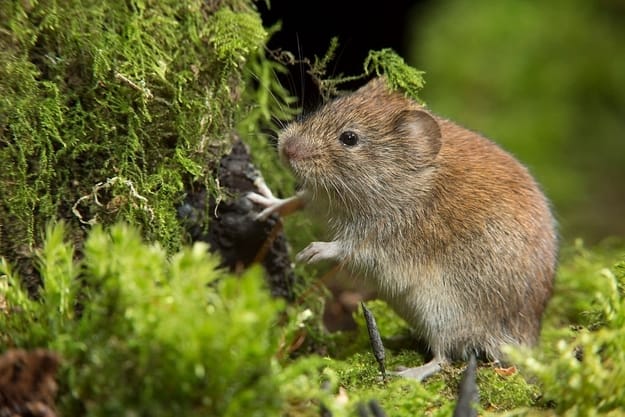
Voles
Voles also known as “field mice” are nocturnal creatures and prefer to live in areas with lots of vegetation covering the ground. They like soft soils because this makes it easier for them to burrow underground where they can find food and shelter from predators such as dogs or cats who might otherwise eat them alive! They are one of the most common garden pests and they can be a real problem for your tulips. So what do you do if you have a vole problem in your garden?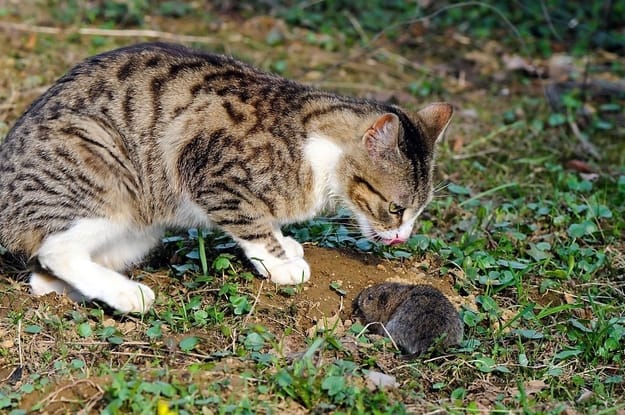
Voles are attracted to thick grass and other plants, so make sure you get rid of any that might be hiding places for voles. They also love thick ground cover, so make sure you clear away dead leaves and other debris from around your bulbs.
A simple chicken wire fence will keep voles out of your yard. Make sure the bottom is buried at least 6″ below the surface of your soil, or else they’ll burrow under it and continue eating your tulips.
You can also cover individual plants with cages made of mesh or chicken wire, making sure they are large enough for the plant’s root system to grow through but small enough not to allow voles to enter through any gaps between wires.
You can protect your precious flowers from vole destruction with certain varieties of bulb plants such as Daffodils, Snowdrops and Camassia. Voles don’t like the taste of this bulbs. It is not a sweet treat to them at all!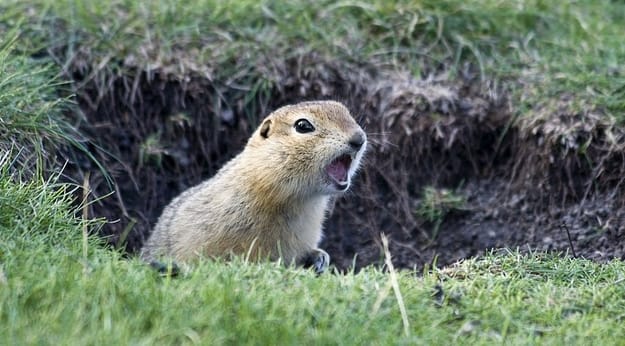
Gophers
Gophers are voracious eaters. They will devour anything you put in their path, whether it’s a delicious carrot or your prized tulips.
The best way to keep gophers away from your tulips is by using an allium flower as a deterrent. Alliums are known as ‘garlic flowers’, which makes them smell terrible and it keeps gophers away! If you have any other garden plants that you’d like to protect against hungry gophers, try planting a few alliums around them as well.
Put chicken wire around the base of your tulips. This will keep them from getting close enough to eat them and also protect them from other types of animals that might try to eat them too.
Use peppermint oil around the base of your tulips. Peppermint oil smells like peppermint which is a natural repellent for most animals including gophers!
Put gopher traps around the base of your tulips so that when they come by looking for food they will get caught instead!
Squirrels
Squirrels love tulips. They eat them, dig up the bulbs and hide them, and make a mess of the garden. There are several ways to deal with squirrels eating tulips in your yard, but the most effective way is to prevent squirrels from getting access to the bulbs in the first place.
The most common way to do this is by using wire mesh around your tulip bed. This will keep out squirrels but allow rainwater to flow through freely, so that it can reach down into the soil and help your bulbs grow strong roots.
You can also use traps made of mesh or netting to catch any squirrels who have already gotten into your tulip bed. These traps should be placed near entrances where they might be able to get in quickly, such as along fences or under porches. Then, when you trap a squirrel you can release it far away from your tulip beds so that it won’t come back again!
Plant alliums and daffodils in the area where the squirrels are eating tulips. These plants are considered by squirrels to be poisonous, so they won’t eat them.
If you have a bird feeder near where you have planted tulips, remove it or put it away from where you’re growing tulips.
Place strong-smelling agents around your tulip bed to deter the squirrels from coming back. You can try using cayenne pepper or mothballs, which will make their noses burn and their eyes water when they come near your flowers again!
Deer
It’s not unusual for deer to eat tulips. They have a keen sense of smell and can detect the sweet scent of the tulip blossoms from far away.
Deer are herbivores who eat grasses, bark, leaves, twigs and fruits. They also enjoy eating bulbs and roots like tulips.
There are several ways to deal with deer eating tulips.
First, you can put up a fence to keep them out. This is the most effective way, but it can be expensive and time consuming.
Second, you can use deer repellant that contains garlic and hot peppers. This will make your tulips taste bad and prevent the deer from eating them. You should spray this repellant on a daily basis for about two weeks.
Third, you can use scare tactics such as hanging wind chimes or balloons in your yard to scare away the deer. These methods may not work for long, but they will certainly buy you some time until you find a more permanent solution.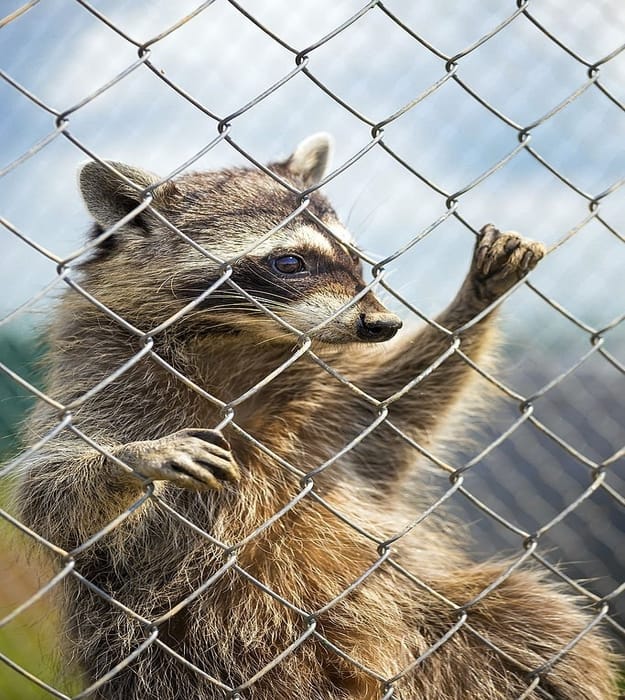
Raccoons
The best way to prevent raccoons from eating your tulips is to make sure they don’t have access to your garden at night when they are most active. You can do this by putting up fences around your yard so they cannot reach any plants that you want left alone. If you don’t have enough space for a fence, then consider using motion-activated sprinklers instead because these will scare away any animals that come near them without causing any damage.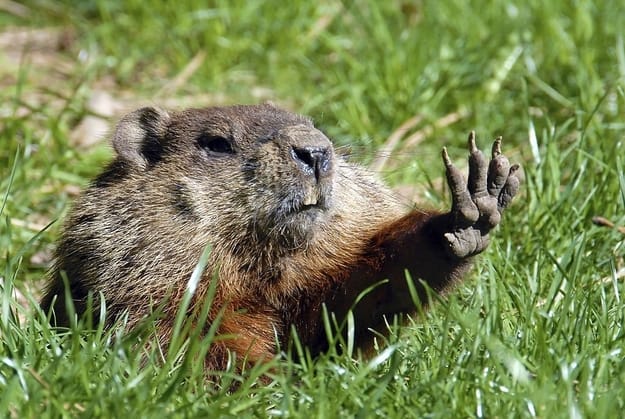
Groundhogs/ Woodchucks
Groundhogs are a common nuisance for gardeners and landscapers, especially in the spring when they have babies. They eat tulips and other plants, causing serious damage to your garden. Here are some tips to stop them from eating tulips:
Groundhogs can be easily tricked by placing a fake owl or snake near the tulip patch. This will scare them away from the area and they will not return until they see that there is no danger.
You can also try using predator urine around the tulip patch so that it smells like predators are nearby and this will deter groundhogs from coming near your tulip patch again in future years.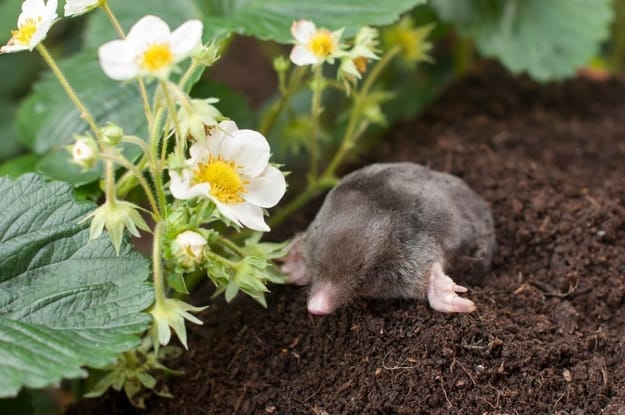
Moles
Moles are small mammals that live in underground tunnels. They eat bugs and worms. Moles eat bulbs when the bulbs rot and eat the bugs inside.
Moles prefer loose soil with a high moisture content, so try planting them in raised beds or planters instead of directly in the ground. And if possible, try planting them in a raised bed lined with wood chips or something else that will prevent the moles from burrowing easily through it.
Second, if the garden bed is already established but you still want to keep it out of reach for those pesky moles? Try surrounding it with chicken wire or other materials that will prevent them from burrowing.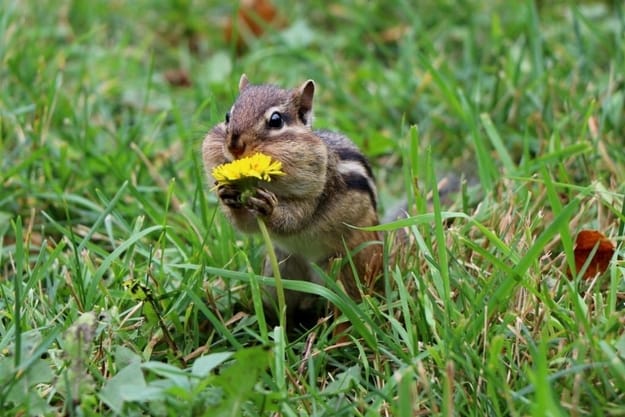
Chipmunk
The chipmunk is a cute little creature that many people enjoy watching as it plays in their garden. Unfortunately, these adorable creatures also like to dig up and eat tulip bulbs. But there are some steps you can take to stop these creatures from destroying your tulip beds.
They like the bulbs and the flowers equally, so if you keep your flowers out of reach of these creatures, you’ll solve half of the problem. Chipmunks do tend to avoid alliums, scilla, daffodils and other plants with similarly bulbous flowers which means you can use those as an added layer of protection.
Another way is to plant some sort of plant that grows tall enough to block off access to your bulbs but not be too invasive or take over your whole garden something like sweet alyssum would work well here.
Another option is to create a barrier between the tulips and any areas where they might be able to dig up bulbs this could mean creating a trench or mound around each bulb with soil that’s too rocky or difficult for them.
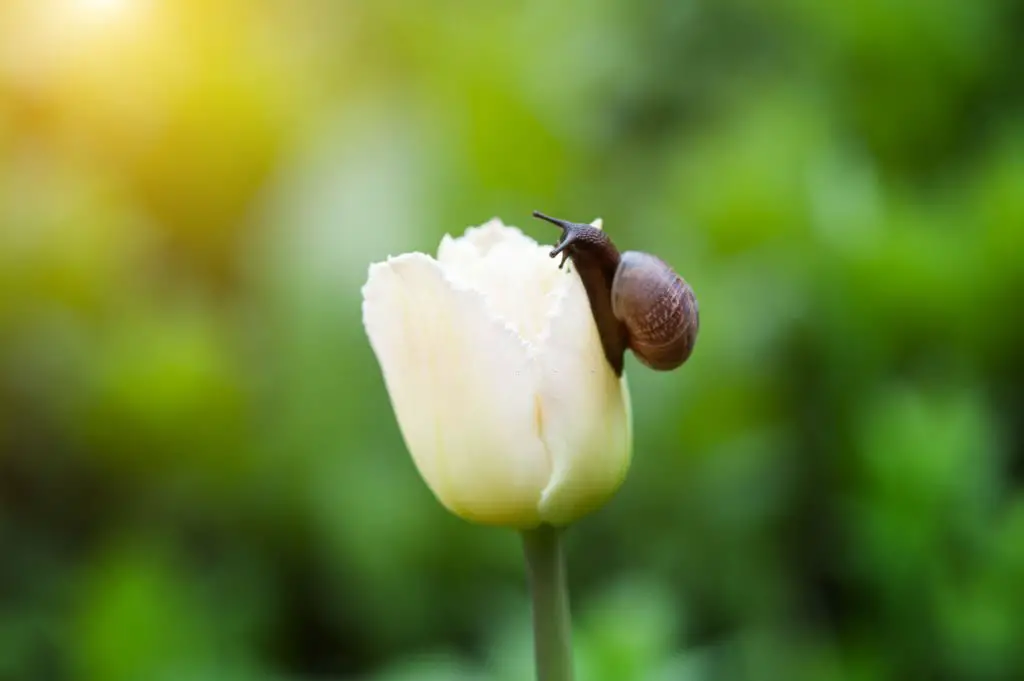
Slug & Snails
Slug and snails are garden pests that can do a lot of damage to your tulips. They eat the leaves and flowers the plant. Slugs feed at night, so you might not notice that they’re damaging your plants until it’s too late.
If you have a problem with slugs or snails eating your tulips, consider using diatomaceous earth (DE) as a deterrent. DE is made from crushed fossilized algae, and it works by cutting into the skin of these pests when they crawl over it. It then absorbs their juices and dehydrates them. You can find DE at any garden store or online, where it may be called “diatomaceous earth.”
Another option is sprinkling salt on the soil around your tulips slugs and snails don’t like salt very much it causes them to dehydrate, so this may deter them from coming near your flowers in the first place.
Aphids
Aphids are the bane of many gardeners’ existence. They’re tiny, they’re hard to identify, and they love to eat your tulips. But what do they look like? How do you know if they’re eating your tulips? And how can you stop them from doing so?
Aphids are tiny bugs that come in a variety of colors: green, yellow, red and black. They are typically about 1/8 inch long, but can be as small as 1/16th of an inch or as large as 3/4 of an inch. They have wings and antennae, but don’t fly very well. Their mouth parts are made for sucking out plant juices. If you see some hairy-looking bugs on your tulip stems or leaves, you may have aphids!
How do I know if my tulips have been affected by aphids?
If your tulips have been affected by aphids, they may look sickly or wilted. The leaves may become crumpled up and dry out at the tips or edges. You’ll also see little white eggs on the leaves or stem near where an insect has been feeding on it before laying.
The easiest way to deal with aphids is to use a soapy spray. Just mix water and dish soap in a spray bottle, and spray your tulips. This will kill the aphids and keep them away.
You can also try spraying your tulips with neem oil, which is an insect repellent that works on aphids.
If you want a more natural approach, you can try making a homemade spray out of hot pepper water, which will also repel aphids from your tulips.
Fungus gnats
Fungus gnats are a common pest you may encounter while growing tulips. They’re tiny flies that eat the roots of your tulips and can cause serious damage to your plants.
They lay their eggs in the soil around your tulips, and when the larvae hatch they burrow into the roots of your plants and feed off of their nutrients. This causes your tulip bulbs to rot, which inhibits growth and eventually kills them.
Fungus gnats typically appear in springtime because it’s when temperatures start warming up enough for them to thrive outside but if you see them at other times of year, it could be a sign that there is something wrong with your soil drainage.
The best way to prevent fungus gnat infestation is by keeping your soil well-drained so that water doesn’t pool at the bottom of pots or drip trays where eggs can hatch into larvae without being noticed until later this will also help prevent any other kinds of fungal infections from occurring as well.
You can spray plants with insecticides to kill off fungus gnats as they emerge from their pupae stage. You can also try using sticky cards to catch them before they get into your garden beds or pots where they might damage plants by feeding on stems and leaves.
FAQS
Q: How do I stop my tulips from flopping over?
A: Tulips have a natural tendency to flop over when they are older or have been cut back too much. You can help the stems stand up straight by cutting the tops off at an angle rather than straight across.
Q: What should I feed my tulip bulbs?
A: Most gardeners buy commercial fertilizer for their tulip bulbs every spring before planting them in the ground. However, there are some other substances that can be used as fertilizer for this plant as well! Chicken manure is a good option if you don’t want to spend money on commercial fertilizer but still want healthy plants in your garden beds.
Q: How do I plant tulips?
A: Tulips are one of the easiest flowers to grow in your garden! All you need is a sunny spot, good soil, and some patience.
First, dig a hole that is twice as wide as the bulb and about 6 inches deep. Make sure that the top of your bulb is facing up so that it can sprout properly.
Next, place the bulb in your hole and cover with soil. Water well after planting to make sure everything gets nice and moist.
Q: When should I start planting my tulips?
A: January through March are ideal times to plant tulips in most parts of the country; however, if there is more than one foot of snow on the ground when you’re ready to plant them outdoors—wait until spring arrives! In warmer climates like southern California, you can plant tulips year-round if you protect them from frost by covering them with frost blankets or mulch during cold spells which means they’ll need more water than plants planted outside during milder winters.
Q: How long do tulips last once they’re cut?
A: A cut tulip will last about three days in a vase of water. For longer-lasting flowers, place them in a bucket of water with sugar added, which will keep them fresh for up to two weeks!
Conclusion
There you have it! You know what to do to keep your tulips safe from the various animals and insects that can eat them. But no matter what, you should always be aware of the signs that your tulips are being eaten by something, so you can take action quickly and save them. I hope you enjoyed reading this post and learned something new!
Thanks for reading!
Also Read: Why is my dragon fruit plant turning yellow? (Here’s How to Fix This)

